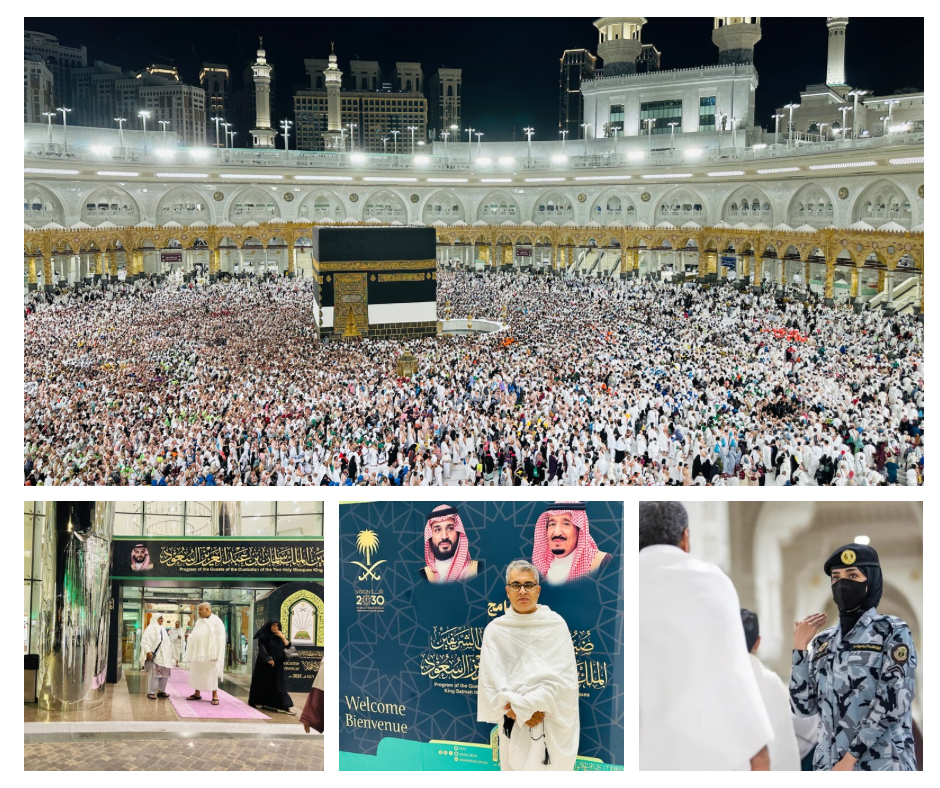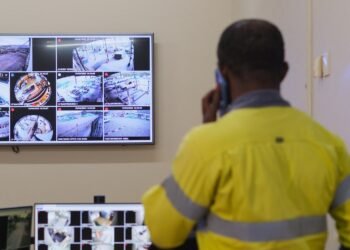MECCA, SAUDI ARABIA: As the world’s gaze turns toward Makkah for Hajj 2025, Saudi Arabia stands as a beacon of transformation, seamlessly blending centuries-old tradition with forward-thinking innovation. Under the dynamic leadership of Crown Prince Mohammed bin Salman (MBS), the Kingdom’s Vision 2030 is not just a blueprint for economic and social reform—it is a lived reality, visible in every facet of this year’s pilgrimage.
This transformation is particularly evident in the Kingdom’s response to past challenges. In direct response to the painful lessons of Hajj 2024, which was overshadowed by a tragic heatwave that led to over a thousand reported fatalities, Saudi authorities have implemented sweeping reforms and mobilized an unprecedented array of resources. The goal is clear: to ensure the safety, comfort, and spiritual fulfillment of every pilgrim who sets foot on this sacred journey.
Logistical enhancements have played a central role in these efforts. Over 1.3 million international pilgrims have already arrived, a figure expected to exceed 2 million by the culmination of Hajj. Their journeys have been significantly eased by expanded airport capacities, especially at King Abdulaziz International Airport (Jeddah) and Prince Mohammed bin Abdulaziz International Airport (Medina), along with streamlined land and sea entry points that have improved the overall pilgrim intake system.
Equally remarkable are the improvements within the Holy Sites themselves. The Grand Mosque’s Mataf now accommodates an astonishing 107,000 pilgrims per hour, thanks to extensive infrastructure upgrades and the integration of advanced crowd management systems such as AI-powered surveillance, thermal drones, and smart wearables. These technological tools work in concert with smart cards and real-time mobile apps, offering pilgrims navigation assistance, safety alerts, and personalized updates, thus ensuring a seamless ritual experience.
Transportation across the holy sites has also seen transformative change. According to the Saudi Ministry of Hajj and Umrah, over 2,500 climate-controlled buses—all equipped with GPS tracking, live monitoring, and onboard medical kits—are operating across the Hajj routes. Complementing this, newly built shaded walkways, fogging systems, air-misting zones, and solar-powered water stations are strategically placed to provide respite from the intense summer heat.
These innovations are not mere logistical solutions—they are deeply tied to the visionary leadership of Crown Prince Mohammed bin Salman, whose Vision 2030 places the welfare of pilgrims at the core of Saudi Arabia’s national mission. As MBS noted:
“The Hajj is not only a sacred duty but also an opportunity for Saudi Arabia to demonstrate its commitment to the Muslim world. Our responsibility is to ensure that every pilgrim can perform their rituals with dignity, safety, and peace of mind. Vision 2030 empowers us to harness technology and innovation while honoring our spiritual heritage.”
Reinforcing this commitment, Minister of Hajj and Umrah Dr. Tawfiq Al-Rabiah emphasized the broader significance of these developments:
“The Kingdom’s investments in digital solutions, infrastructure, and international cooperation are setting a new global standard for religious gatherings. Hajj 2025 is not just an event—it is a vision of global unity and strategic foresight.”
This spirit of global unity is further demonstrated by Saudi Arabia’s proactive diplomatic outreach. A pivotal component of the Hajj transformation is the enhanced role of Saudi embassies and consulates around the world. These diplomatic missions have become vital enablers, providing early visa issuance, health screenings, and access to the Makkah Route Initiative, which allows pilgrims to complete entry formalities at their home airports
This year, the Makkah Route Initiative has been expanded to include airports in Indonesia, Malaysia, Pakistan, Bangladesh, Turkey, Côte d’Ivoire, Nigeria, and India. As a result, tens of thousands more pilgrims have benefitted from faster processing and more dignified travel experiences. The program not only reduces congestion but also upholds Saudi Arabia’s commitment to inclusivity and order.
As Foreign Minister Prince Faisal bin Farhan aptly stated:
“Our embassies are bridges of trust and hospitality, ensuring that every pilgrim’s journey is supported from their homeland to the Holy Sites. This year, we have worked hand-in-hand with international partners to enhance safety, transparency, and efficiency at every step.”
Echoing this diplomatic strength, the Saudi Cabinet recently expressed its pride in the nation’s historic responsibility as Custodian of the Two Holy Mosques. In its latest session, the Cabinet highlighted the seamless integration between ministries, the private sector, and international organizations, made possible through strategic investments and world-class infrastructure projects such as the Haramain High-Speed Railway and smart housing developments.
“Serving the pilgrims is a sacred honor,” the Cabinet stated. “The Kingdom’s continuous development and adoption of best practices reflect our dedication to the comfort and safety of all visitors, in line with the vision set forth by our leadership.”
Yet the Kingdom’s approach to Hajj 2025 transcends logistics and infrastructure—it reflects a comprehensive, globally coordinated model that embodies modern governance in service of sacred tradition. From digital health protocols to smart surveillance systems, the aim is not only to safeguard pilgrims but to elevate their entire spiritual journey.
One of the most groundbreaking aspects of this year’s Hajj is the rollout of multilingual digital platforms offering AI-driven interpretation services, virtual tours, and emergency translation in over 15 languages. These tools empower pilgrims to navigate complex rituals and emergencies with confidence and clarity, regardless of language barriers.
Saudi Arabia has also taken critical steps to ensure public health security. In partnership with the World Health Organization (WHO) and other international agencies, the Kingdom has implemented comprehensive disease surveillance systems, variant detection protocols, and mobile clinics staffed with over 16,000 healthcare workers. Thanks to these efforts, no major health incidents have been reported during the ongoing pilgrimage—a significant achievement under the intense pressures of high temperatures and global travel.
In summary, Hajj 2025 stands as more than just a pilgrimage—it is a global benchmark for religious event management, a case study in visionary governance, and a reflection of Saudi Arabia’s growing stature on the world stage. As millions of pilgrims fulfill their sacred obligations, the world watches as Saudi Arabia redefines what is possible when tradition meets innovation, and when faith is honored with leadership, foresight, and unity.
– Dr. Shahid Siddiqui; Follow via X @shahidsiddiqui
WATCH, LIKE and SUBSCRIBE CHANNEL





















